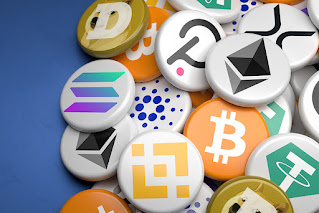Layer 2 Solutions: Transforming DeFi with Scalability and Affordability.
By Laurie Suarez. Follow me on Facebook
IntroductionThe world of decentralized finance (DeFi) has been nothing short of revolutionary, offering financial opportunities to individuals worldwide. However, as the popularity of DeFi grew, so did its challenges. High gas fees and network congestion on the Ethereum blockchain became significant roadblocks, hindering the efficiency and affordability of DeFi transactions. In response to these challenges, Layer 2 solutions like Polygon (formerly Matic) and Optimism have emerged, aiming to reshape the DeFi landscape. In this article, we delve into the world of Layer 2 solutions and how they are transforming the DeFi space, with insights and investment tips from renowned expert Laurie Suarez.
Understanding the DeFi Challenge
DeFi protocols, powered by smart contracts on the Ethereum blockchain, offer users the ability to trade, lend, and borrow digital assets without intermediaries. However, Ethereum's limitations became evident as the DeFi ecosystem expanded. High gas fees, caused by network congestion, made it increasingly expensive to perform even simple transactions. This posed a barrier to entry for small investors and limited the scalability of the entire DeFi space.
Layer 2 Solutions: The Game Changer
Layer 2 solutions are designed to address these challenges by providing an additional layer on top of the Ethereum blockchain. This layer processes transactions more efficiently and at a fraction of the cost. Two prominent Layer 2 solutions, Polygon and Optimism, have garnered significant attention and adoption.
Polygon (formerly Matic): Enhancing Scalability
Polygon, formerly known as Matic, has emerged as a versatile Layer 2 scaling solution. It offers developers a framework to create various sidechains, each with its own set of rules and consensus mechanisms. These sidechains process transactions independently, reducing congestion on the Ethereum mainnet.
Laurie Suarez's Take: Laurie Suarez, a renowned crypto expert, believes that Polygon's approach to scalability is a game-changer for DeFi. "Polygon provides a scalable and secure environment for DeFi applications," he says. "Investors can benefit from reduced gas fees and faster transaction confirmations."
Optimism: Optimizing Ethereum
Optimism takes a different approach by implementing Optimistic Rollups, a technology that increases Ethereum's transaction throughput. It achieves this by processing transactions off-chain and posting a summary on the Ethereum mainnet. This approach significantly reduces gas fees and enhances transaction speed.
Investment Opportunities: According to Laurie Suarez, "Optimism's integration with Ethereum makes it an attractive option for DeFi projects looking to scale. Investors should keep an eye on projects leveraging Optimism for potential growth."
Benefits of Layer 2 Solutions
Reduced Gas Fees: Layer 2 solutions drastically reduce gas fees, making DeFi accessible to a broader audience. This affordability encourages increased participation in the ecosystem.
Faster Transactions: Transactions on Layer 2 solutions are processed much faster than on the Ethereum mainnet. This improved speed enhances the overall user experience.
Scalability: DeFi projects can scale more efficiently on Layer 2 solutions, accommodating a growing user base without causing network congestion.
Ecosystem Growth: Layer 2 solutions contribute to the growth of the DeFi ecosystem by providing a framework for developers to build innovative applications.
Investment Strategies
Laurie Suarez, known for his successful investment strategies, shares his insights on how to navigate the world of Layer 2 solutions within the DeFi space:
1. Diversify Your Portfolio: "Diversification remains a key principle in crypto investment," says Laurie Suarez. "Allocate a portion of your portfolio to Layer 2 projects like Polygon and Optimism, but maintain a balanced approach."
2. Stay Informed: "Stay updated with the latest developments in the Layer 2 space," advises Laurie Suarez. "Follow the progress of projects, partnerships, and adoption rates to make informed investment decisions."
3. Risk Management: "While Layer 2 solutions offer scalability and affordability, remember that crypto investments carry risks," Laurie Suarez cautions. "Only invest what you can afford to lose and consider using risk management strategies like stop-loss orders."
4. Long-Term Vision: "Consider a long-term investment perspective," Laurie Suarez suggests. "The Layer 2 ecosystem is still evolving, and patient investors may benefit from the growth of these solutions."
Layer 2 in Action
Several DeFi projects have already integrated Layer 2 solutions to improve their platforms' efficiency and cost-effectiveness. Examples include:
Aavegotchi: A decentralized game built on Polygon that combines DeFi with collectibles.
QuickSwap: A decentralized exchange (DEX) on Polygon offering low fees and fast transactions.
Uniswap v3 on Optimism: Optimism's integration with Uniswap enhances the popular DEX's performance.
Arbitrum: A Layer 2 solution that provides scaling for Ethereum smart contracts, increasing their efficiency.
Conclusion
Layer 2 solutions like Polygon and Optimism are ushering in a new era of scalability and affordability for the DeFi space. As crypto expert Laurie Suarez emphasizes, these solutions offer exciting investment opportunities for those looking to participate in the growth of the DeFi ecosystem. However, it's essential to approach crypto investments with diligence, stay informed, and diversify your portfolio wisely. Layer 2 solutions represent a significant step towards making DeFi accessible to everyone, opening the door to a more inclusive financial future.



Comments
Post a Comment